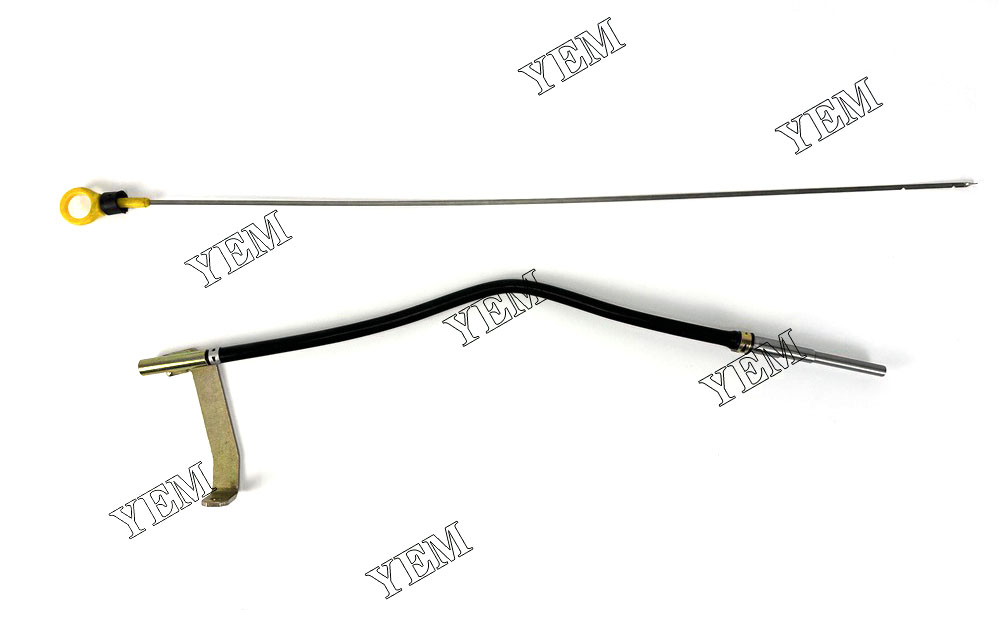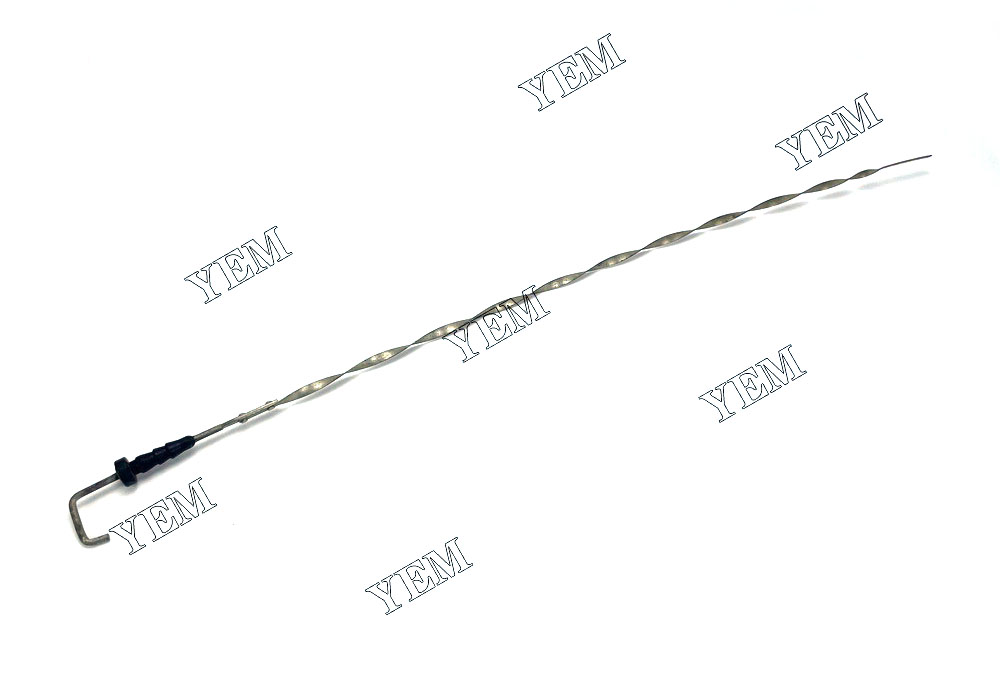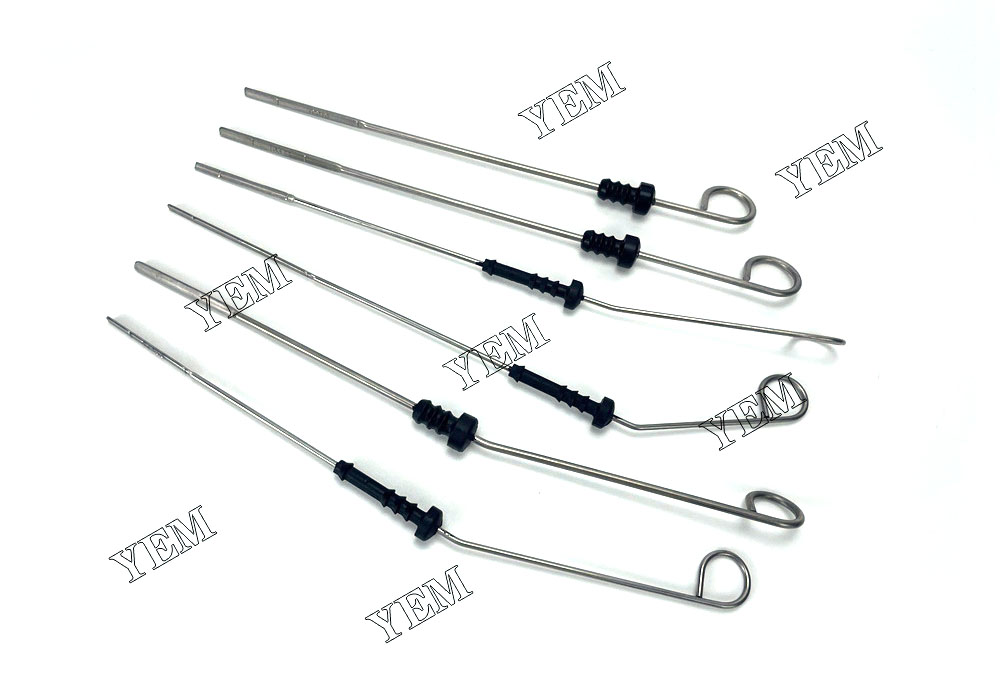The engine is a key component of the car, and keeping the engine running properly is crucial to vehicle performance and life. Among them, engine oil plays an important role. It not only lubricates and cools the engine parts, but also keeps the inside clean and provides protection. Knowing the amount of oil in your engine is an important task, and the engine dipstick is the tool that helps us achieve this goal. In this blog, we will discuss the purpose of an engine oil dipstick and the importance of proper use and maintenance.
What is an engine oil dipstick?
An engine oil dipstick is a long, thin, and typically metallic tool designed to measure the level of engine oil in a vehicle’s engine. It is usually located near the oil fill cap and is easily accessible within the engine compartment.
The dipstick has markings or indicators on it that indicate the recommended oil level range for the engine. By inserting the dipstick into the oil reservoir or oil pan and then removing it, the user can visually inspect the oil level on the dipstick. The oil level should fall within the acceptable range indicated by the markings on the dipstick.
Checking the engine oil level regularly using the dipstick is an important part of vehicle maintenance. It allows drivers to ensure that the engine has an adequate amount of oil for proper lubrication and cooling, as well as for the protection of engine components. It is generally recommended to check the oil level when the engine is cold and the vehicle is parked on a level surface to obtain an accurate reading.
If the oil level is below the recommended range, it may indicate a need for adding more oil to the engine. Conversely, if the oil level is above the recommended range, it may be an indication of overfilling, and some oil may need to be drained to bring it within the appropriate range.
In summary, the engine oil dipstick is a simple yet crucial tool that allows drivers to monitor and maintain the proper oil level in an engine, promoting optimal performance and longevity. Regularly checking the engine oil level using the dipstick is an essential part of vehicle care.

The importance of engine oil quantity
The quantity of engine oil in a vehicle is of great importance for its proper functioning and overall performance. Here are a few reasons why maintaining the correct engine oil quantity is crucial:
- Lubrication: Engine oil ensures that the moving parts of the engine, such as the pistons, crankshaft, and camshaft, are properly lubricated. It forms a thin film of oil between these components, reducing friction and preventing metal-to-metal contact. Insufficient oil quantity can lead to increased friction and wear, potentially causing engine damage or failure.
- Heat Dissipation: Engine oil also helps in dissipating heat generated by the engine. It absorbs heat from the engine’s components and carries it away, preventing overheating. Adequate oil quantity ensures efficient heat transfer and helps keep the engine operating within its optimal temperature range.
- Seal and Gasket Integrity: Engine oil helps maintain the integrity of seals and gaskets within the engine. It provides a lubricating barrier that prevents leaks and keeps the seals and gaskets in good condition. Insufficient oil quantity can cause these seals to dry out and fail, resulting in oil leaks and potential engine damage.
- Contaminant Suspension: Engine oil acts as a carrier for contaminants, such as dirt, debris, and combustion by-products. It holds these particles in suspension and prevents them from accumulating on engine surfaces. Sufficient oil quantity allows for better contaminant suspension and helps keep the engine clean.
- Overall Engine Protection: The correct quantity of engine oil is crucial for overall engine protection. It helps prevent premature wear, corrosion, and damage to critical engine components. Maintaining the recommended oil quantity ensures that the engine is adequately protected and can operate smoothly and efficiently.
It’s important to note that both insufficient and excessive oil quantity can be detrimental to the engine. Too little oil can lead to inadequate lubrication and increased friction, while too much oil can cause excessive pressure and foaming. Therefore, it is essential to follow the manufacturer’s guidelines and regularly check and maintain the correct oil quantity for your specific vehicle.
Keeping the engine oil at the recommended level through regular oil checks and changes is a vital aspect of vehicle maintenance. It helps promote engine longevity, efficiency, and reliable performance for the long term.

How to use the engine oil dipstick correctly
To use the engine oil dipstick correctly, follow these steps:
- Make sure your engine is turned off and has had enough time to cool down.
- Locate the dipstick, which is usually a brightly colored handle or loop sticking out from the engine.
- Gently pull the dipstick out from the engine and wipe it clean with a cloth or paper towel. This ensures you get an accurate reading.
- Reinsert the dipstick back into the engine all the way, then pull it out again.
- Look at the end of the dipstick, which will have markings indicating the oil level. Usually, there are two marks labeled “Min” and “Max” or a crosshatch pattern indicating the acceptable range.
- The oil level should fall within the “Min” and “Max” marks or within the crosshatch pattern. If it’s below the “Min” mark, you need to add more oil.
- If the oil level is below the “Max” mark, you can add oil slowly through the oil filler cap using a funnel. Be sure to check the oil level again after adding oil.
- Ensure that you put the dipstick back securely in place when you’re finished.
Remember, checking the oil level regularly and maintaining the proper oil level is essential for your engine’s health and performance. If you are unsure or have any concerns, consult your vehicle’s manual or a qualified mechanic for guidance.

Maintain engine oil dipstick
To properly maintain the engine oil dipstick, here are some tips:
- Keep it clean: Regularly wipe the dipstick with a clean cloth or paper towel before and after checking the oil level. This helps remove any debris or oil residue, ensuring an accurate reading.
- Check the oil level regularly: Make it a habit to check your engine oil level every few weeks or according to the manufacturer’s recommendations. This helps you monitor the oil level and identify any potential leaks or issues.
- Follow the manufacturer’s instructions: Refer to your vehicle’s manual for specific guidelines on checking and maintaining the engine oil dipstick. Different car models may have variations in the process, so it’s important to follow the recommended procedures.
- Use proper handling techniques: When removing or inserting the dipstick, be careful not to touch the hot engine components to avoid injury. Additionally, make sure the dipstick is securely inserted into the engine to prevent oil leaks.
- Replace if damaged: If you notice any cracks, bends, or other damage to the dipstick, it should be replaced. Damaged dipsticks may give inaccurate readings or break inside the engine, causing further issues.
- Inspect the dipstick tube: Occasionally inspect the dipstick tube for any signs of damage or blockage. A damaged tube can affect the accuracy of the oil level reading, while a blocked tube may prevent proper oil circulation.
Remember, maintaining the engine oil dipstick is just one part of proper vehicle maintenance. Regular oil changes, using the recommended oil type, and addressing any oil leaks or issues are also crucial for keeping your engine running smoothly.

Contact us
YEM Professional Excavator Parts Team is a reliable and experienced team specializing in providing top-quality excavator parts. With our extensive expertise and knowledge in this field, we offer a wide selection of parts to meet diverse customer needs.
Whether you require replacement parts for hydraulic systems, engine components, chassis components, or any other excavator part, the YEM team has you covered. We source our products from reputable manufacturers, ensuring that each part meets the highest standards of quality and durability.
What sets us apart is our unwavering commitment to exceptional customer service. We understand the importance of timely support and strive to promptly respond to inquiries and requests. Our knowledgeable staff is readily available to assist customers in identifying the correct parts for their specific excavator models and providing installation and maintenance instructions.
To contact the YEM Specialized Excavator Parts team, you can reach us through our website, via email, or by phone. We are dedicated to fostering long-term relationships with our customers and are eager to assist you with all your excavator parts needs.
